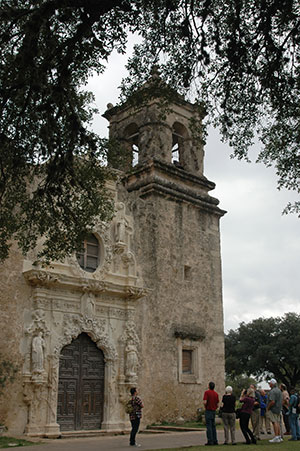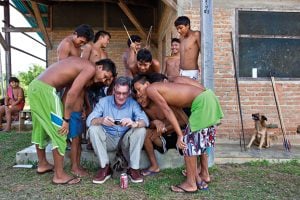
Environment
The truth about carbon capture
Carbon capture is big business, but its challenges fly in the face of the need to lower emissions. Can we square the circle on this technological Wild West?
- 5042 words
- 21 minutes
This article is over 5 years old and may contain outdated information.
Travel

Wandering the grounds of Mission Concepción, with its hand-hewn twin bell towers that overlook the suburbs of modern-day south San Antonio, it’s easy to see why the influence of the Spanish crown that established the complex 282 years ago extended no farther north. The earth underfoot is bone dry, parched by the brutal Texas sun. Mission Concepción — and the city’s four other missions — would not exist were it not for the nearby San Antonio River, which beginning in the late 1600s was harnessed by Franciscan missionaries to bring water to over 1,400 hectares of farmland.
The infamous Alamo (originally Mission San Antonio de Valero) now stands in San Antonio’s downtown core, while Concepción, San José, San Juan and Espada missions run south, spaced along a 10-kilometre riverside route in the National Historical Park. They’re the bestpreserved buildings of their sort, and more closely resemble the historic sections of Cartagena, Colombia, or Lima, Peru — both UNESCO World Heritage sites — than the gleaming Texan city that surrounds them. Walking through these echoing limestone missions grants the traveller a real sense of the pivotal role that they played in south Texas’s motley history, and why the sites are also now being considered for World Heritage status.
“The cultural landscape of it all is still intact,” says Susan Snow, the U.S. National Parks Service’s world heritage coordinator for the San Antonio Missions. “It’s the only place where you can see everything required of self-sustaining missions: farms, irrigation and ranching.”
Spanish missionaries sought Catholic converts, and local Coahuiltecan peoples sought safety from attacking Apache warriors. Within the missions’ walls they had security. It came at a price, though — they had to give up their hunter-gatherer existence and participate in the missionaries’ religious and agricultural way of life.
The best place to see what it would have been like is at Mission San José. This walled complex, with its arched walkway and colourful frescoes, once housed 350 Native American converts. In its spacious courtyard are rebuilt stone encampments, showing where and how the Coahuiltecan lived. The sprawling structure could easily host a football game, even absorbing the Texas-sized crowd that’s sure to accompany it in these parts.
At Mission San José, parishioners still gather to worship to the sounds of a Mariachi mass, where a seven-piece band resounds off the stone floor and stuccoed walls. Played with a mix of European instruments such as the guitar and indigenous American instruments including the maracas, the service’s musical heritage matches that of its audience. The largely mestizo crowd has an ancestry that’s both Native American and Spanish. When the missionaries left, a blend of Spanish and Native cultures remained, and this blend became modern San Antonio.
“With the German and Anglo settlement that followed, everything came together as today’s distinct Tejano culture,” Snow says. “It was the missions that made south Texas.”
Are you passionate about Canadian geography?
You can support Canadian Geographic in 3 ways:

Environment
Carbon capture is big business, but its challenges fly in the face of the need to lower emissions. Can we square the circle on this technological Wild West?

Travel
From the canyonlands to the rodeo culture, the thriving arts scene to the small but distinguished wine region, the Texas Panhandle is full of surprises

Travel
Jill Doucette, founder and CEO of Synergy Enterprises, shares insights on new trends in the tourism industry and why there’s reason to be optimistic about a sustainable future for travel

People & Culture
An exclusive Q&A with British explorer, comedian and actor Michael Palin